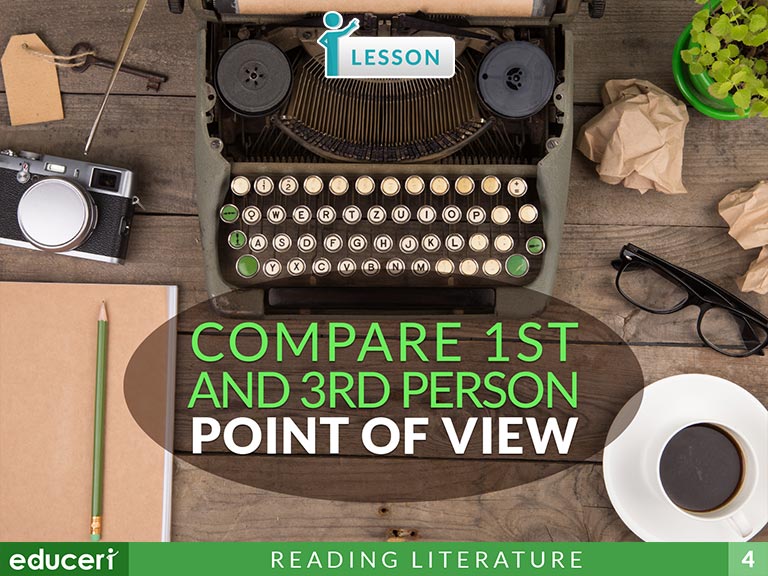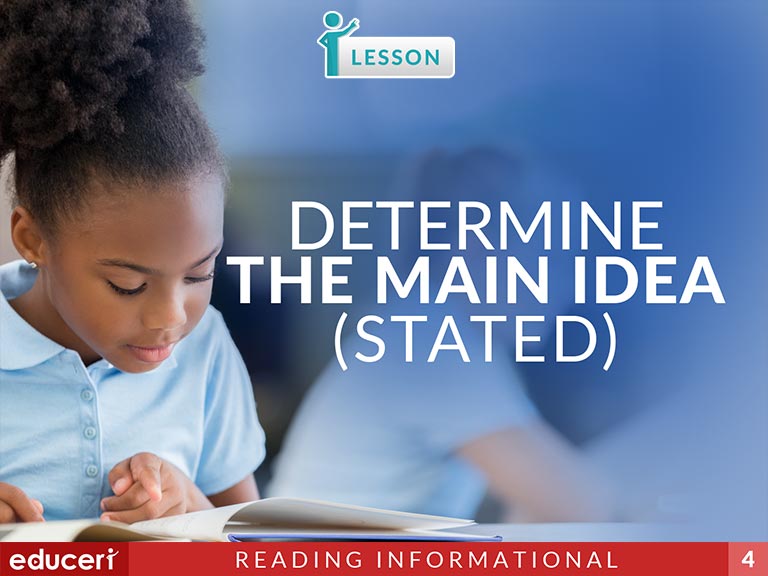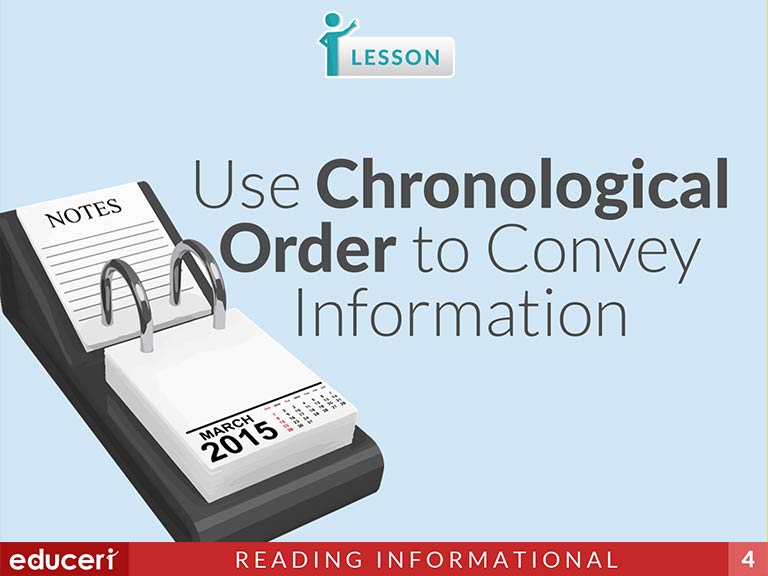All Lessons

Determine a Theme in Literature
This reading literature lesson teaches students how to determine the theme of a piece of literature. The lesson includes research-based strategies and strategic questions that prepare students for assessments. In this lesson, a theme is defined as a message or lesson about life. Many universal themes are used such as Love conquers all, looks can be deceiving, and do unto others as you would like done to you.
Share This Lesson

Make Predictions
This reading comprehension lesson focuses on making predictions. The lesson includes research-based strategies and strategic questions that prepare students for assessments. In this lesson, students use clues from the text they read, as well as prior knowledge to make predictions. In addition to the lesson, there are four pages of Independent Practice and review with questions modeled after current adaptive testing items.
Share This Lesson

Make Predictions using Foreshadowing Clues
This reading comprehension lesson focuses on making predictions using foreshadowing clues. The lesson includes research-based strategies and strategic questions that prepare students for assessments. In this lesson, students read a passage and the provided underlined foreshadowing clues. Then they use the clues, combined with prior knowledge, to make a prediction. In addition to the lesson, there are four pages of Independent Practice and review with questions modeled after current adaptive testing items.
Share This Lesson

Determine the Main Events of the Plot
This literary response and analysis lesson focuses on identifying the main events of the plot. The lesson includes research-based strategies and strategic questions that prepare students for assessments. In this lesson, students read a passage, and the bold problem and solution. Then, they identify the main events of the plot. In addition to the lesson, there are four pages of Independent Practice and review with questions modeled after current adaptive testing items.
Share This Lesson

Compare Myths and Fables
This literary response and analysis lesson focuses on describing structural differences between myths and fables. The lesson includes research-based strategies and strategic questions that prepare students for assessments. In this lesson, students read a passage and identify characteristics of either a myth (humans, gods & goddesses, etc.) or a fable (animal characters, moral, etc.). Then, they determine if the passage is a myth or a fable. In addition to the lesson, there are eight pages of Independent Practice and review with questions modeled after current adaptive testing items.
Share This Lesson

Compare 1st and 3rd Person Point of View
This reading literature lesson focuses on contrasting points of view. The lesson includes research-based strategies and strategic questions that prepare students for assessments. In this lesson, students read two versions of a story from a different perspective and compare the stories. The lesson focuses on how the change in point of view affects the story. In addition to the lesson, there are eight pages of Independent Practice and review with questions modeled after current adaptive testing items.
Share This Lesson

Compare Patterns of Events in Stories (The Quest Pattern)
This reading literature lesson focuses on comparing the broad patterns of events in stories. The lesson includes research-based strategies and strategic questions that prepare students for assessments. There is also a separate whiteboard insert for students to more easily do the student work without flipping back and forth in the handout.
Share This Lesson

Main Idea & Key Details
This reading informational text lesson teaches students how to determine the main idea and key details of a text. The lesson includes research-based strategies and strategic questions that prepare students for assessments. In this lesson, students are given examples where the main idea is located near the beginning of the text and near the end of the text. Students are also asked to look at other possible details and determine which would best fit the main idea of the text. This lesson provides students with a great foundation for writing informational text. This lesson includes a whiteboard insert that students can use to record their answers during the initial lesson or plan their own writing in the future.
Share This Lesson

Describe Cause & Effect Text Structure
This reading informational text lesson teaches students how to analyze text that has a cause and effect text structure. The lesson includes research-based strategies and strategic questions that prepare students for assessments. In this lesson, students have to identify the cause and effect within a paragraph and then select from four options the option which best summarizes the main cause and effect of the passage.
Share This Lesson

Identify the Compare and Contrast Pattern in Informational Text
This reading comprehension lesson focuses on identifying the compare-and-contrast pattern in the informational text. The lesson includes research-based strategies and strategic questions that prepare students for assessments. In this lesson, students read the text, looking for compare and contrast clue words to identify two things being compared and whether or not the text is a compare-and-contrast text pattern. In addition to the lesson, there are eight pages of Independent Practice and review with questions modeled after current adaptive testing items.
Share This Lesson

Identify Sequential Order Patterns
C.4.G (Reading) demonstrate comprehension of increasingly complex English by participating in shared reading, retelling or summarizing material, responding to questions, and taking notes commensurate with content area and grade level needs;
C.4.JC.4.J (Reading) demonstrate English comprehension and expand reading skills by employing inferential skills such as predicting, making connections between ideas, drawing inferences and conclusions from text and graphic sources, and finding supporting text evidence commensurate with content area needs; and
Share This Lesson

Follow Instructions in a Technical Manual
This reading comprehension lesson focuses on following instructions in a technical manual. The lesson includes research-based strategies and strategic questions that prepare students for assessments. In this lesson, students answer questions using the steps and information from different technical manuals. In addition to the lesson, there are five pages of Independent Practice and review with questions modeled after current adaptive testing items.
Share This Lesson

Select a Focus in Writing
This writing strategies lesson focuses on selecting a focus on writing. The lesson includes research-based strategies and strategic questions that prepare students for assessments. In addition to the lesson, there are five pages of Independent Practice and review with questions modeled after current adaptive testing items.
Share This Lesson

Identify Proposition and Support Patterns in Text
This reading comprehension lesson focuses on identifying the proposition-and-support pattern in the text. The lesson includes research-based strategies and strategic questions that prepare students for assessments. In this lesson, students read the text and identify the proposition of the author by identifying and details in the text. Then, they determine if the text uses proposition-and-support and defend their answers. In addition to the lesson, there are eight pages of Independent Practice and review with questions modeled after current adaptive testing items.
Share This Lesson

Use Chronological Order to Convey Information
This writing strategies lesson focuses on using chronological order to convey information. The lesson includes research-based strategies and strategic questions that prepare students for assessments. In this lesson, students put information in the correct chronological order and then write a paragraph to convey in information in chronological order. In addition to the lesson, there are four pages of Independent Practice and review with questions modeled after current adaptive testing items.
Share This Lesson

Distinguish Between Fact and Opinion
This reading comprehension lesson focuses on distinguishing between fact and opinion. The lesson includes research-based strategies and strategic questions that prepare students for assessments. In this lesson, students read a passage and label each sentence as fact or opinion. Students must defend their answers. In addition to the lesson, there are four pages of Independent Practice and review with questions modeled after current adaptive testing items.
Share This Lesson

Identify Chronological Order in Informational Text
This reading comprehension lesson focuses on identifying chronological order in the informational text. The lesson includes research-based strategies and strategic questions that prepare students for assessments. In this lesson, students identify chronological clue words (months, days, years, time, age, etc.) and determine if the text is in chronological order. In addition to the lesson, there are four pages of Independent Practice and review with questions modeled after current adaptive testing items.


